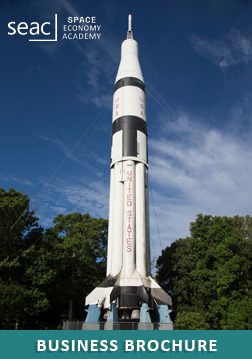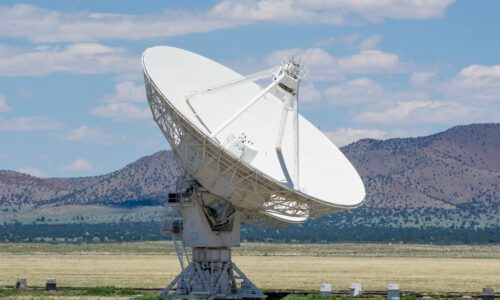- 2-day live program (16 hours); small cohort (minimum 3 participants).
- Double certificate: SEAC Space Academy + Eduardo Calixto.
- 1-month ReliaSoft access (learner license) to practice the methods.
- Instructor Q&A and discussion throughout.
- SEAC community access and career guidance pointers.
ECSS RAMS Training
Price: €1,200 per person
Duration: 2 Days Training (16 hours)
Minimum cohort: 3 people
1.200,00€
- Space
- 392 (Registered)
1.200,00€
Why ECSS RAMS matters for space?
Reliability, Availability, Maintainability and Safety (RAMS) is the backbone of mission success. In the harsh space environment, small design or process decisions cascade into system-level risks, cost growth, and schedule slips. A strong RAMS culture aligned with the ECSS Q‑series standards de‑risks development, improves reviews (SRR/PDR/CDR), and protects launch and in‑orbit operations.
- Reduce mission risk through structured analysis (FMECA, FTA) and quantitative models (lifetime data, reliability prediction, availability/Markov).
- Meet ESA/prime expectations by aligning with ECSS Q‑series dependability & product assurance practices.
- Accelerate decisions with clear RAM performance indexes (MTBF, MTTR, Ao/Ai, B‑life) and evidence‑based trade‑offs.
- Advance your career with a portfolio of RAMS deliverables that hiring managers recognize.
Overview of the ECSS RAMS Training:
Format: 100% live online (virtual classroom)
Duration: 2 days (total 16 hours)
Cohort: minimum 3 participants
Software: ReliaSoft — complimentary 1‑month learner access; the instructor teaches and demonstrates analyses using the software during the training
Certificate: Double certificate issued by SEAC Space Academy and Eduardo Calixto.
Focus: ECSS‑aligned RAMS (Dependability & Product Assurance) with practical links to complementary standards used in aerospace and defense
- Apply ECSS Q‑series RAMS concepts across the lifecycle and into the bid phase.
- Compute and interpret RAM performance indexes (Reliability, B‑life, Ao/Ai, MTTF/MTBF/MTTR).
- Identify, quantify, and treat safety risks (risk matrix, failure rate‑based quantification).
- Understand organizational enablers and barriers for RAMS programs.
- Practice core RAMS methods (LDA, RAM analysis, FMEA/FMECA, RCM, functional safety, FTA) using ReliaSoft.
The skills you will develop
By the end of the RAMS ECSS you will be able to:
- Translate mission and product assurance goals into RAMS requirements and plans.
- Build and interpret reliability and availability models to support design trade‑offs.
- Execute and review FMEA/FMECA and FTA with defensible assumptions.
- Prepare bid‑phase RAMS inputs and articulate RAMS value to stakeholders.
- Tailor RAMS activities to program phase while staying ECSS‑aligned.
Participant Profile
Participants of the ECSS RAMS program are:
- Systems, RAMS & Product Assurance engineers seeking ECSS Q‑series alignment and hands‑on practice with ReliaSoft across the mission lifecycle.
- Safety engineers & compliance leads who need to quantify risk (risk matrices, failure rates per standards) and interface with ECSS Product Assurance.
- Reliability/Maintainability analysts transitioning from other industries to space, aiming to apply LDA, reliability prediction (e.g., MIL‑HDBK‑217/ERPD), MTBF/MTTR, and availability modeling.
- Test & Verification engineers responsible for qualification/acceptance planning, FMEA/FMECA, FTA, and verification control (VCD/matrix) traceability.
- Bid/Proposal and project managers who must embed RAMS requirements and evidence into offers, plans, and design reviews (SRR/PDR/CDR).
- Supply‑chain & QA managers working with primes/ESA who need to align suppliers with ECSS RAMS expectations and deliverables.
- Entrepreneurs & SME teams (New Space) aiming to institutionalize RAMS culture, processes, and deliverables early to reduce risk and accelerate development.
Included with enrollment
Curriculum
- 6 Sections
- 40 Lessons
- Lifetime
Expand all sectionsCollapse all sections
- Section 1:Space Economy12
- 1.11.1. Space Economy FundamentalsCopy
- 1.2Reading : What is value in the New Space Economy ? The end-users’ perspective on satellite data and solutionsCopy
- 1.3Reading: The long-term scientific benefits of a space economyCopy
- 1.41.2. New Space & Commercialization in Earth observationCopy
- 1.51.3. Public Investments and Political Involvement in the Space SectorCopy
- 1.6Reading: Sustainable space for a sustainable Earth? Circular economy insights from the space sectorCopy
- 1.71.4. Private Investments, StartUp Ecosystem and PPPsCopy
- 1.8Discussion with ESA directors: Developing interdisciplinary business models to enlarge the space ecosystemCopy
- 1.9Reading: Assessing the full effects of public investment in spaceCopy
- 1.10Space2Connect 2021 – keynotes: Space role & investment in economic recovery & future market opportunitiesCopy
- 1.11Reading: The Astropreneurial Co-creation of the New Space EconomyCopy
- 1.12Quiz : Space EconomyCopy
- Section 2:Upstream and Downstream segments10
- 2.12.1. Examples of Non-Space Industries making use of Space ApplicationsCopy
- 2.2Reading: Downstream Space Activities in the New Space Era: Paradigm Shift and Evaluation ChallengesCopy
- 2.3Reading: Everybody’s Business to Know About Space: Cross-Disciplinarity and the Challenges of the New Space AgeCopy
- 2.4Φ-week – Downstream Industry for Digital Twin Earth. Part ICopy
- 2.52.2. Technology Advances: Artificial Intelligence in SpaceCopy
- 2.6Reading: The Advent of Artificial Intelligence in Space Activities: New Legal ChallengesCopy
- 2.72.3. Upstream and DownstreamCopy
- 2.8Φ-week – Downstream Industry for Digital Twin Earth – Part IICopy
- 2.92.4. Innovation segments in SpaceCopy
- 2.10Quiz : Upstream and DownstreamCopy
- Section 3:Space Policy8
- 3.13.1. Space Issues and Risk ManagementCopy
- 3.2Quiz : Space Issues and Risk ManagementCopy
- 3.3Space Law : 11 Questions with Marco FerrazzaniCopy
- 3.43.2. International Space LawCopy
- 3.53.3. Models of Innovation and TRLCopy
- 3.63.4. Space Economy Numbers and ArchitectureCopy
- 3.73.5. Space StandardisationCopy
- 3.8Quiz : International Space LawCopy
- Section 4:Space Economy Strategies3
- Section 5:Core Concepts in Space Industry Management6
- Section 6:Essay1
Lecturer
Dr. Lucia Fonseca de la Bella is the Faculty Strategic Project Manager for the Space Sector at the University of Surrey, where she leads the development of the new Surrey Space Economy Institute. In this role, Dr. Fonseca supports the University’s research and innovation strategies in the space sector, while also developing initiatives to strengthen partnerships with key industry players. Previously, she served as the European Space Agency's Business Applications Ambassador in the UK, a position in which she helped non-space companies incorporate space assets into their operations.









